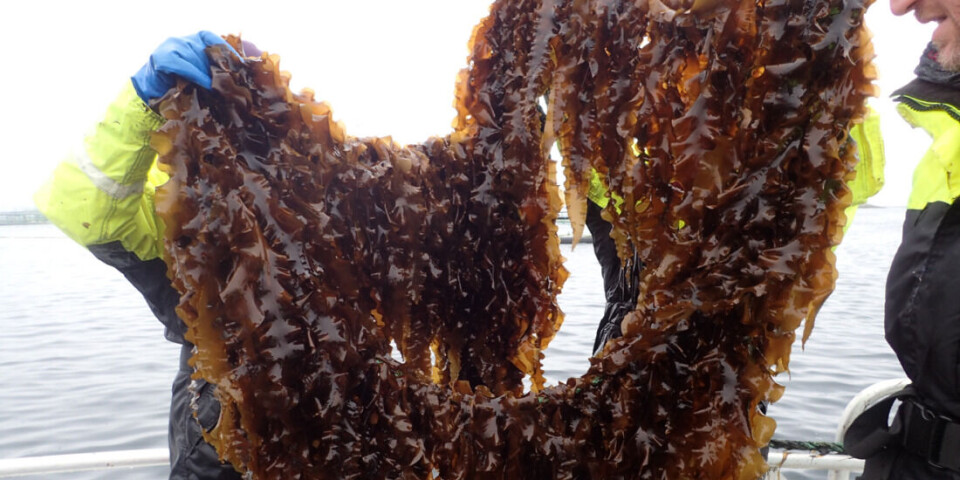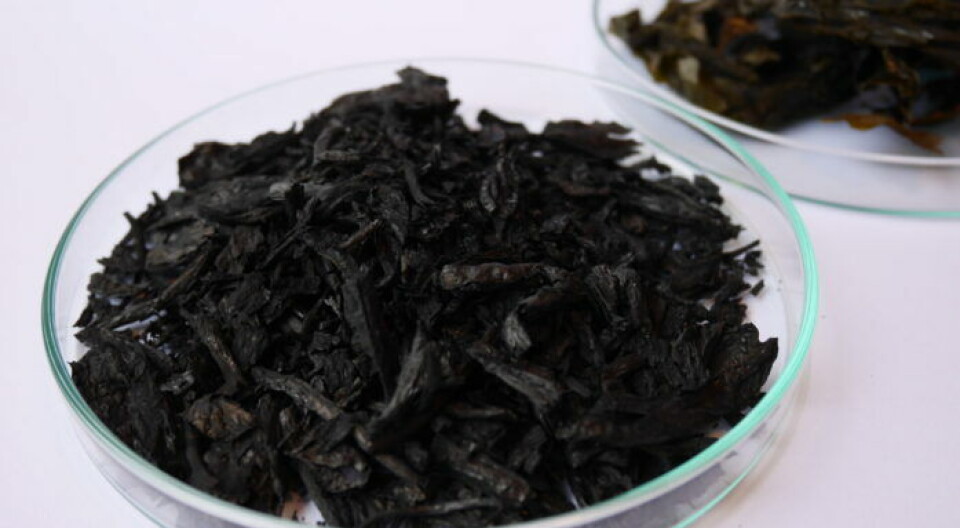THIS ARTICLE/PRESS RELEASE IS PAID FOR AND PRESENTED BY SINTEF - read more

Researchers are now testing a new method for carbon capture and storage in seaweed
Seaweed will be converted into biocoal and used to improve agricultural land.
“Our current plans for emission reductions simply won’t be enough. If we are to meet our climate change mitigation targets, we have no time to lose in removing CO2 from the atmosphere,” Jorunn Skjermo says.
She is a research scientist at SINTEF.
According to Skjermo, seaweed has a remarkable ability to absorb CO2, and we ought to be learning how to exploit this process.
Carbon capture at sea
The process of making biocoal from seaweed will start on land with the cultivation of macroalgae seedlings on ropes.
This will take place in labs both in Trondheim and at a company based in the Netherlands, in order to enable comparisons to be made between two different approaches. In the autumn, the ropes will be installed at a cultivation facility in Frohavet, a stretch of open ocean located off the coast of Fosen in central Norway.
Seaweed grows slowly in the darker seasons, but as winter recedes and the days get longer, its growth will accelerate. It is during this period of growth that the seaweed absorbs CO2. By the following summer, it will be ready for harvesting.
Since the concentration of carbon dioxide in the atmosphere and in the oceans are balanced, carbon capture in the sea has the same effect as capturing it from the air.
Locking in the carbon
Once harvested, the seaweed is dried before undergoing pyrolysis, which converts it into biocoal. This is achieved by heating the seaweed to about 600 degrees Celsius in an oxygen-free atmosphere.
Pyrolysis is a word of Greek origin, where 'pyro' means fire and 'lysis' means splitting.
This process serves to modify the molecular structure and stabilise the carbon. The resulting biocoal is resistant to degradation by fungi and microorganisms.

Pyrolysis will take place at SINTEF Energy Research's laboratories and at a commercial company.
The effect of the biocoal on arable land will be tested at the Mære Agricultural College in central Norway. Arable land refers to fertile soil that is suitable for cultivating crops can be used in agriculture.
Improving the soil
“Deriving biocoal from seaweed both captures and stores CO2, as well as resulting in a product for which there is a need,” Jorunn Skjermo says.
Skjermo leads the research part of the project named Seaweed Carbon Solutions JIP (Joint Industry Project).
The addition of biocoal to soil is intended to help boost porosity and water retention capacity. It will also create favourable conditions for the growth of microorganisms.
When biocoal is combined with a fertiliser product that is also derived from seaweed, the mixture serves to supply the soil with useful nutrients.
Out at sea
The offshore seaweed cultivation facility comprises a network of powerful ropes, or hawsers, on which the seaweed grows, suspended from large floats. The facility will be anchored to the seabed.
Most existing facilities in Norway are located close to the shore. There are several reasons why SINTEF wants to install the trial facility in the open ocean, despite the harsher weather conditions.
“Models indicate that seaweed yields will be higher the further we are from the coast. We’ll be getting more seaweed per metre of rope. Part of this is due to the longer period of access to nutrient-rich water. Water temperatures are more stable and the salinity virtually constant,” Skjermo explains.
Full-scale production by 2030
The test facility will cover an area of 650 decares, and the production is expected to yield 600 tonnes of seaweed, resulting in 25 tonnes of biocoal.
Researchers at SINTEF have calculated that a seaweed facility with a size of one square kilometre would produce 20,000 tonnes of seaweed annually, equivalent to the capture of 3,000 tonnes of CO2.
“I believe that it is realistic to upscale this approach to an industrial facility by 2030,” Skjermo says.
She adds that s factory will have to be built to produce the biocoal from the seaweed.
“Perhaps the best approach will be to locate such a factory close to a smelter or other industrial plant that can act as a source of surplus heat. Not all the carbon in the seaweed can be converted into biocoal, so such a factory will have to have a system installed that captures and stores by-product CO2 from the pyrolysis process,” she says.
The researcher is convinced that seaweed cultivation will develop into a significant industry. Norway has an extensive coastline, large tracts of open ocean, favourable natural growing conditions, high levels of maritime expertise. and ready access to clean energy.
Cost considerations
Producing biocoal from seaweed will also result in new CO2 emissions, but the researchers believe that the reduction will be significantly greater.
"Seaweed cultivation and the production of biocoal will be expensive. So, what do the economics look like?"
“No one achieves major reductions in CO2 emissions for free. Much will depend on how the authorities come to value the benefits in terms of climate change mitigation. The advantage of this capture and storage approach is that it also generates a product that offers a new source of revenue,” Skjermo says.
She emphasises that careful considerations must be made regarding the location of seaweed facilities to avoid conflicts.
Avoiding conflict
“It is vital that we exploit the ability of biomass to bind CO2. This means exploring all the options available to us. Carbon capture at sea using seaweed is more efficient than using plants on land, and the area available is potentially very extensive," she says.
They will look into which approaches offer the greatest benefit and the lowest levels of conflict.
"Many factors have to be taken into consideration. The open ocean also has many users and there will be competition for space,” she says.
The facility in Frohavet is a good example, as it is located between a marine conservation area, a naval firing range, a fishing area, and a shipping lane.
An innovative concept
Johanne Tryggvason Hosen at SINTEF Ocean AS is the project leader and believes the concept is unique.
“What we will achieve in terms of carbon capture by means of seaweed cultivation is innovative, incredibly exciting, and locally-sourced in terms of the raw materials involved,” she says.
The project is founded on many years of research and experience in the exploitation of seaweed.
"The green transition will require high levels of innovation,” she says.
See more content from SINTEF:
-
Propellers that rotate in opposite directions can be good news for large ships
-
How Svalbard is becoming a living lab for marine restoration
-
New study: Even brand-new apartments in cities can have poor indoor air quality
-
Fresh hope for patients with chronic inflammatory bowel disease
-
Testing a giant ship: May take five kilometres to stop
-
A robot is helping researchers hunt for the best cancer warriors





































